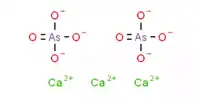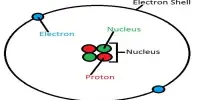The study, published in the journal Chem, uses a new class of materials to enhance the properties of rye, creating the brightest fluorescent material in existence. Chemists have just created such brilliant talents and the results are astounding. If you ever visit Neon Raw, you will appreciate the innovation that brings talent, from body color to illumination, it just spreads the insects we want to see in the bright light.
Existing fluorescent dyes always return to their luminosity after being converted to solid optical materials. When they enter a stiff position, the characters undergo a process called “quenching“, which is related to how they behave when smoking together and consequently tends to decrease in its intensity.
The researchers mixed a pigment with a clear solution called cyanostar, a star-shaped macrocycle molecule that inhibits the “quenching” effect when the pigment is converted to a solid, to overcome this “defeated aura” effect. The cyanostar breed stops the effect because it creates a mesh-like structure, which impresses and separates them from each other.
Previous studies have tried to use these divider macrocycles to keep the letters separate, but these macrocycles also had their own color which reduced the effect. The flood team realized that colorless macrocycles were the key to revealing Ray’s true fluorescent potential. As the combination of clear cyan stars and dyes hardens, a new class of materials is called – and we are not joking here – small-molecular ionic separation layers or smiles formed in the mixture.
Amar Bonya, a chemist and co-senior author of the research at Indiana University, said in a statement. “They cannot help but ‘touch’ each other. Like young children sitting at storytime, they interfere with each other and stop behaving as individuals.”
These materials have potential applications in any technology that requires bright fluorescence or calls for designing optical features, including solar energy collection, bioimaging, and laser. “Some people think that colorless macrocytes are obsolete, but they do allow the isolation lattice to fully reveal the bright refraction of the pigment embodied by the colors of the macrocycle ,” Flood said.
“These materials are completely new, so we don’t know which of their innate features are actually going to provide higher performance. We don’t even know the limits of those materials. Strong set of design rules for creating.”
















